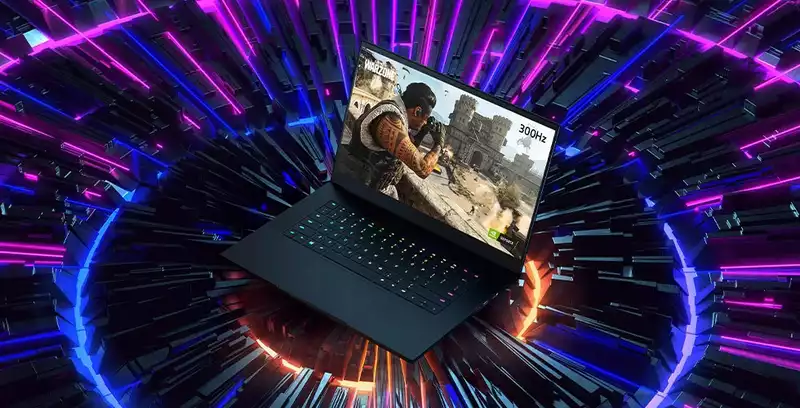The refresh rate wars are heating up. Taking advantage of Intel's 10th generation Comet Lake-H CPUs and Nvidia's new Super RTX mobile GPUs announced today, Acer and Razer have announced new laptop models with new hardware featuring 300Hz displays. [While many laptop makers have announced new models, Acer's Predator Triton 500 and Razer's Blade 15 stand out from the pack with their 300Hz refresh rates.
The selection of 300Hz laptops is quite small. As far as I know, Asus is the only company that still ships laptops with 300Hz displays, and that is the Zephyrus S GX710. The configuration is hard to find, but I found one at Walmart for $3,349.99. Yes, it is expensive.
Razer's new Blade 15 laptop will enter the 300Hz competition in May; the 300Hz refresh rate option will be available in an "Advanced" configuration consisting of the following:
Razer did not specify its price, though, The "Base" model with a 144Hz Full HD display, Core i7-10750H CPU, GeForce GTX 1660 Ti GPU, 16GB RAM, and 256GB M.2 NVMe SSD will have a starting price of $1,599.99.
Meanwhile, Acer's new Predator Triton 500 will also arrive in May with the following hardware and features:
According to Acer, a Core i7 10750H processor, GeForce RTX 2080 Super Max-Q, 32GB RAM, 1 TB SSD, and will cost $2,599.99. The exact configuration of the baseline model has not been revealed, but actual pricing will start at $2,199.
These are the two 300 Hz laptops in preparation. It all depends on how you feel about ultra-high refresh rates. None of us here have had the opportunity to play with 300Hz laptops, but we collectively have some concerns.
The biggest one is exactly where such a high refresh rate would be beneficial. The new CPU and GPU options are interesting, but to think that even the finest combination can push 300 frames per second in more graphically demanding games is a pipe dream. It is not feasible. [Higher refresh rates are more powerful in less demanding games and esports categories. In this connection, Nvidia published a study last December that aimed to show that gamers show better kill/death ratios at higher frame rates. Here is a graph created by Nvidia:
"Of course, correlation does not imply causation. However, when considered in the context of fps benefits such as smoother animations, less ghosting and tearing, and the lower system latency described in the article, the positive relationship shown in the graph makes a bit of sense," Nvidia explained.
Of course, Nvidia has a vested interest in this type of data, so it is up to you to evaluate the study. Anecdotally, our hardware maven Dave James noted that he experienced some problems with overclocked panels.
As a group, we cannot yet speak to the quality of the 300Hz displays on these upcoming laptops, nor is it clear if they are truly native measurements or overclocked settings. But rest assured that we intend to investigate 300Hz gaming as soon as possible.


Comments